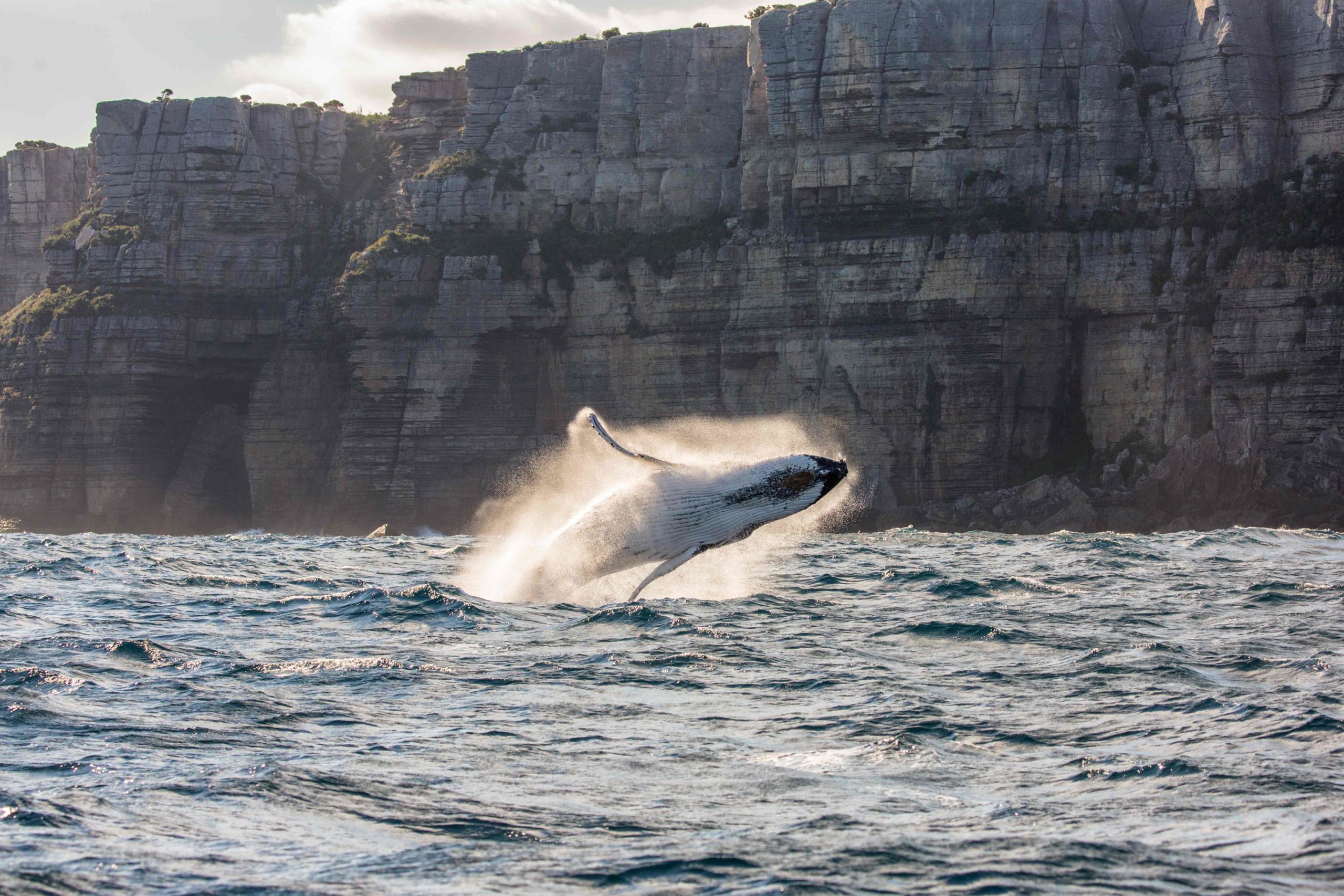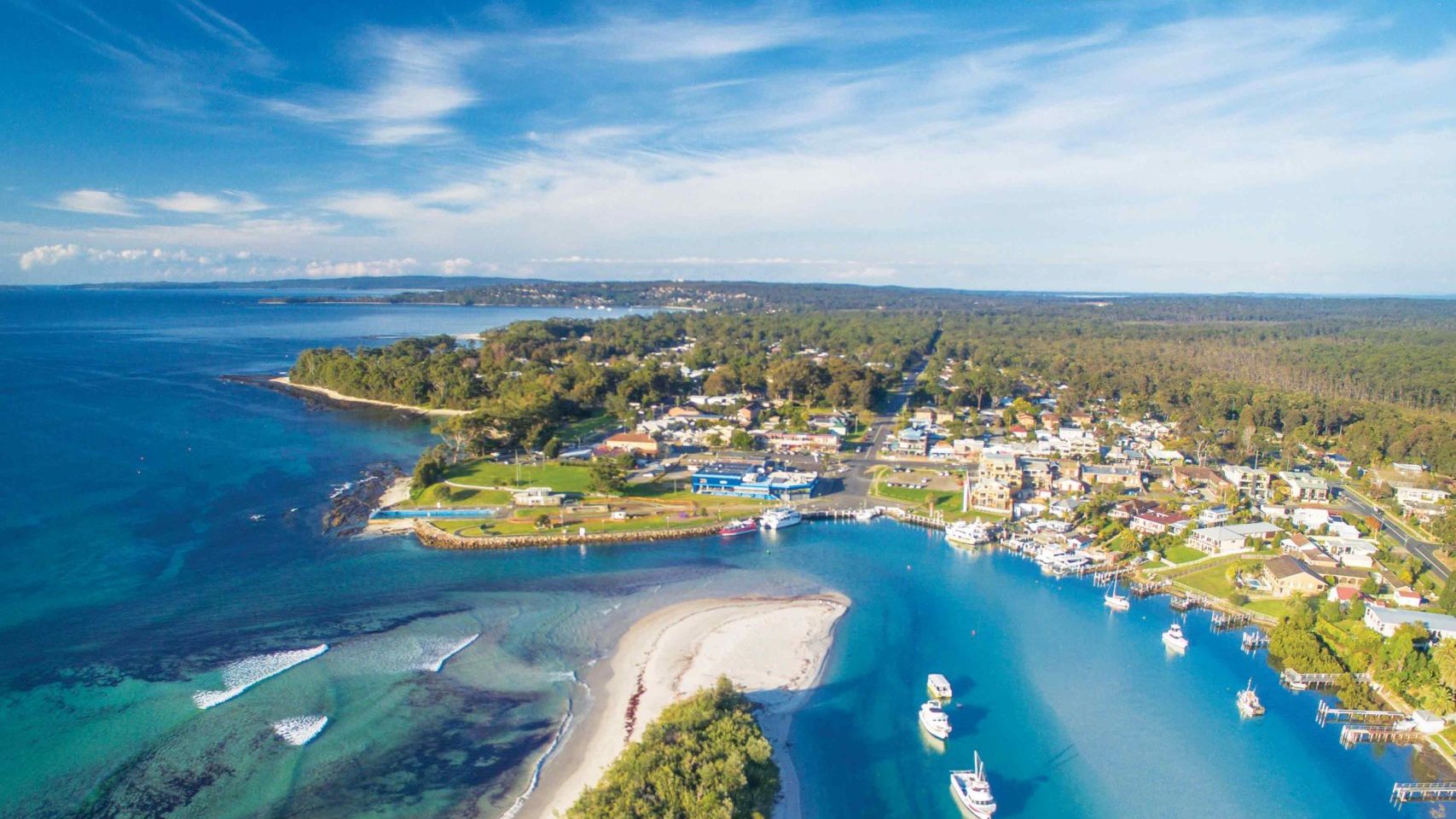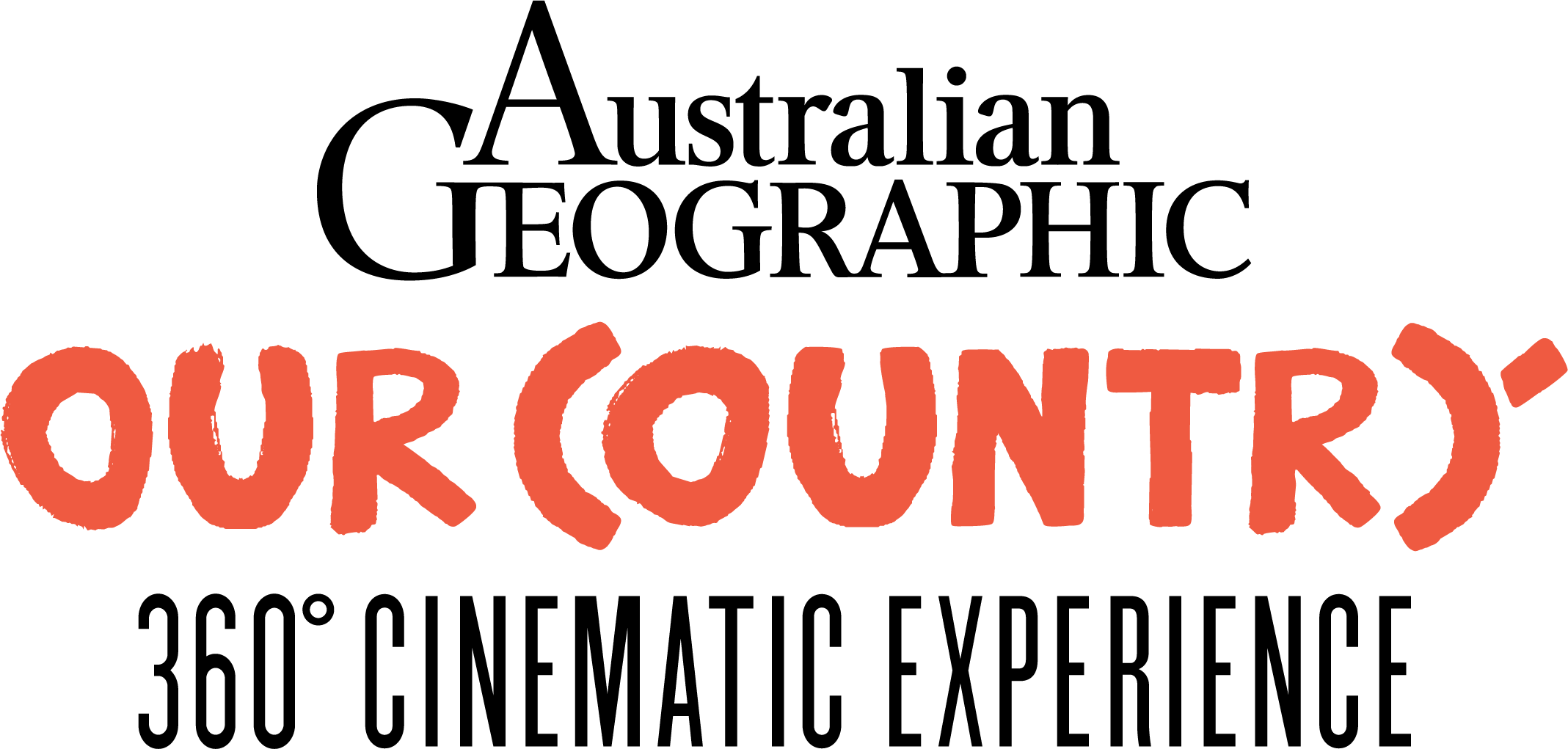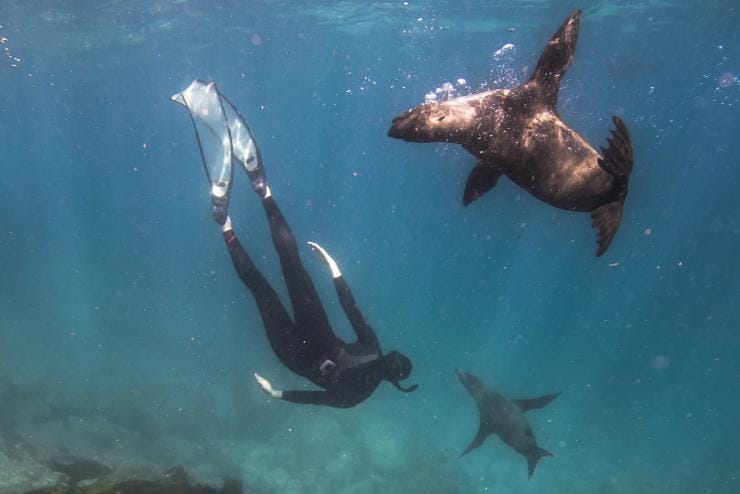
Travel Shoalhaven – The Living Coast
Words: Liz Ginis | Featured Image: Justin Walker
In a scratching of sand at Lake Wollumboola lie two tiny eggs, cream and mottled brown, each no bigger than a thumbnail, but containing a very precious cargo – the beginnings of life. “They’re little terns, and they’re endangered,” says Frances Bray, who has been advocating for birdlife on and around the lake for three decades. “We have 40–50 birds and about 14 breeding pairs this season. I can take you in for a closer look, but follow my footsteps so we don’t upset the mother too much.”
Ducking under a single strand of rope erected by local volunteers to keep the public out of the nesting site, we tread lightly across the sand flat towards the eagle-eyed mum watching us intently. We’re within 10m before she alights. “Softly but quickly,” Frances says under her breath. “We don’t want her off the eggs for long. She may get too distressed and abandon them.” Beside the nest, Frances places a thin metal stake with a white flag and a number scrawled in black marker. “That’s 10 nests at this site [a total of 40 breeding pairs and 100 eggs were recorded during the entire season]; we’re doing well.” Her smile is wide and her joy palpable.
Set behind Warrain Beach on the New South Wales South Coast, Lake Wollumboola is on the national register of important wetlands and provides a breeding place for thousands of migratory and resident native birds. “This summer we estimate the lake is home to about 2500 birds,” Frances says. “There are about 33 species here, from our black swans to pied oystercatchers, red-capped plovers, bar-tailed godwits, curlew sandpipers, Caspian terns, white-bellied sea-eagles…the list goes on and on.” As if on cue, cutting through the swathe of blue sky above us, is a sea-eagle. And trailing not too far behind, trying to run it off, a magpie. “You could stay here all day watching the birds’ comings and goings,” Frances says, as we retreat from the nest to follow a pied oystercatcher stalking the lake’s waterline.
Stretching from Shoalhaven Heads to North Durras and west to Kangaroo Valley and Berry, the region’s crown jewel is Jervis Bay, a big bite of shimmering sea that heaves with dolphins, whales and seals.
In contrast to the sparkling water, to the west is the dramatic Budawang Range, a rugged mountain range that’s part of a spur off the Great Dividing Range and punctuated with lookouts, tracks and picnic spots. I’m drawn to explore the Scenic Rim, a spectacular cliff line crowned by the mountainous formations of Pigeon House (Didthul or Balgan), Corang Peak and The Castle; the area escaped the worst of the Black Summer bushfires of 2019–20 that caused so much devastation nearby. This is breathtaking country: rugged yet gentle, foreboding yet inviting, grand yet exquisitely simple. On the breeze I hear the distinctive squawk of a glossy black-cockatoo.

Boats shelter in the clear waters of Currambene Creek at Huskisson. Image: Courtesy of Destination NSW
Dotted around Jervis Bay’s shoreline are charming hamlets, including Huskisson (Husky to the locals), Vincentia and Hyams Beach. “Jump in,” Terry Davies says, as snowy cumulus clouds, huddled on the horizon, glow with the sun’s first rays. “Dawn is the absolute best time of day to set out – the bay’s like a puddle it’s so calm, and you often have it all to yourself, unless the dolphins and turtles come to play.”
I slip into my sea kayak and push off from the white sand of Iluka Beach in Booderee National Park, and now we’re gliding across the golden pond, skirting the scalloped southern shore of Jervis Bay. “I’ve had whales slip beneath my kayak here, pop up beside me, look me straight in the eye,” Terry says. “The humpbacks come into the bay on their way north and again in spring, when the mums and their calves need a place to rest for a while before heading to the vast Antarctic waters.”
Terry and I are heading to Bowen Island, a sandstone bump lying 250m off the tip of Bherwerre Peninsula at the entrance to Jervis Bay. It’s an easy paddle, and as the sun climbs, the gilded bay morphs to a mesmerising turquoise. The Shoalhaven is credited with having some of the whitest sand in the world; Hyams Beach, not too many clicks north of where we are now, holds the title and is in danger of being loved to death by visitors. Locals are keen to point out there are many beaches scattered around the bay that share the same pristine sand. As we dip our paddles into the drink, I marvel at the colours laid out before me. “Because the sand’s so white, the water takes on this almost unreal blue hue,” Terry says. “It’s like being on a Greek island!”



Images: Justin Walker (left and right), Jordan Robbins/Destination NSW (middle)
A protected seabird habitat, Bowen Island has a no-public-access policy, so we paddle back towards the still waters of Murrays Beach, another dazzling Booderee NP swimming spot, where you can often see little penguins dipping and diving or some of the 100 or so bottlenose dolphins.
As he speaks I catch a glimpse of something a few metres ahead. “It’s a greenie,” Terry says, identifying the green sea turtle just before it disappears into the depths. “That’s a pretty special sighting! You can’t usually sneak up on these guys.” Throughout the park, landforms provide a variety of habitats, including deep-water cliffs, exposed and sheltered sandy beaches, rock platforms, rocky reefs, soft-sediment bottoms, kelp forests, small estuaries, expansive seagrass meadows, mangrove forests and open ocean.
Because of this diversity – more than 230 algae, hundreds of invertebrate, at least 210 reef fish species, many marine mammals, birds and reptiles, with several threatened species – the region teems with life.
Raymond Timbery is a funny fella. A natural storyteller, he exudes warmth and knowledge, and is one of the leaders of Djiriba Waagura (meaning Two Crows in the local Dhurga language), a multifaceted Aboriginal cultural program.
We meet on a sun-kissed morning in the grounds of the Jervis Bay Maritime Museum, at Huskisson. He and Matt Simms, co-founder of Djiriba Waagura, will guide me through the bush to deepen my connection to Country and culture and teach me about traditional customs. As we walk through stands of eucalypts, Raymond stops regularly to show and tell. At a mature Xanthorrhoea he asks the question: “Who knows what this is called?” Everyone looks sheepish. “It’s okay,” he says. “You can call it a black boy, I don’t mind. My strength, my belief in my people, my culture and my ancestors, means it doesn’t affect me.”
He goes on to explain that the plant needs fire to flourish, and that while it looks big and beautiful and healthy, it’s actually suffocating from the base up, being strangled by its own prolific growth. “Fire is like a reset button; it’ll grow back stronger.”





